Despite its abundance, the Pacific Loon is only occasionally seen inland south of Alaska, and it largely sticks to its northern breeding range and Pacific Coast wintering range. Large inland lakes occasionally attract one or more Pacific Loons during the winter months. Pacific Loon migration takes place during the day.
Pacific Loons are not capable of taking off directly from the water or from land. They must have up to 50 meters of open water on which to get a paddling start. Pacific Loons are thought to begin breeding at age three, although this aspect of their lives is poorly understood.
The Pacific Loon is a medium size loon with a rounded head shape. Its plumage varies by season. Sexes are similar.
Description of the Pacific Loon
BREEDING MALE
The Pacific Loon is a medium size loon with a rounded head shape. Its plumage varies by season.
Breeding plumage:
-Pale gray head and nape.
-White stripes on sides of neck.
-Dark upperparts with much white.
-Purple color on throat usually appears black.
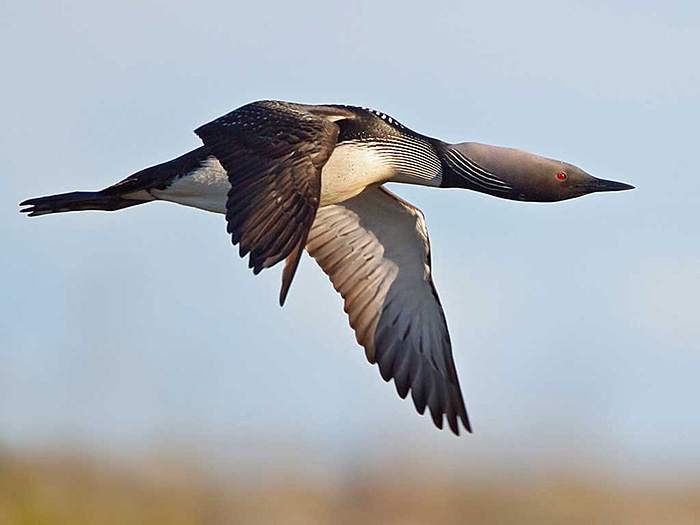
Photograph © Glenn Bartley
Male/breeding plumage:
– Pale gray head and nape.
– White stripes on sides of neck.
– Dark upperparts with much white.
Female
Sexes similar.
Seasonal change in appearance
Winter birds are grayish-brown above with whitish underparts. May show dark chin strap.
Juvenile
Juveniles resemble winter adults.
Habitat
Ocean, and tundra lakes.
Diet
Fish, crustaceans, and insects.
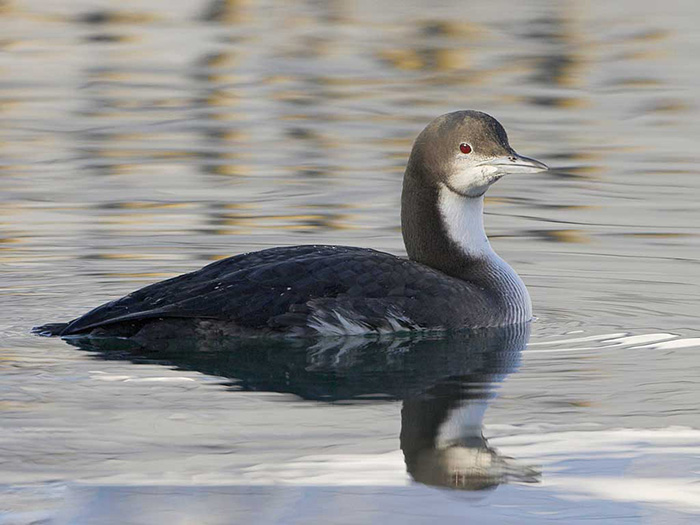
Photograph © Glenn Bartley
Behavior
Forages by diving.
Range
Breeds in Alaska and northern Canada and winters along the Pacific Coast.
Fun Facts
Pacific Loons travel very poorly on land and seldom move more than 100 meters.
During winter, Pacific Loons can occur singly, or in small flocks.
Vocalizations
A variety of squawks and yodels are given on the breeding grounds.
Similar Species
Arctic Loons have white flank patches.
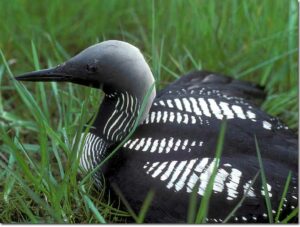
Arctic loon
Nesting
The nest is a pile of vegetation.
Number: 2.
Color: Buff with darker markings.
Incubation and fledging:
– Young hatch at 23-25 days.
– Young fledge (leave the nest) shortly after hatching but remain with the adults for some time.
Photos
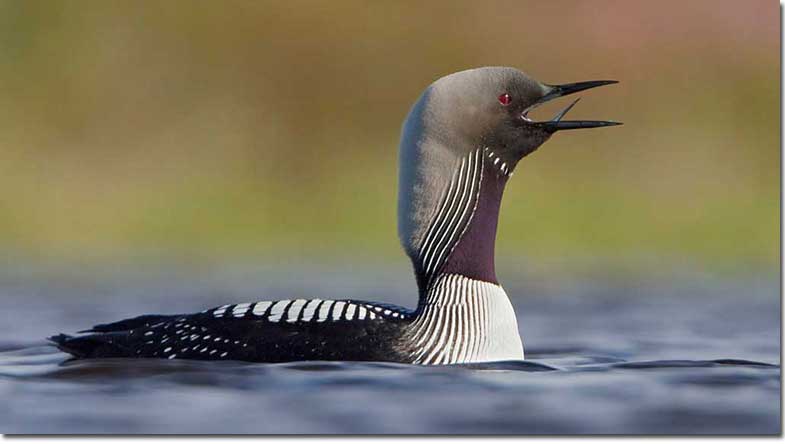
No white on the rear flanks. Similar Arctic Loon shows white mark on the rear flank. Photograph © Glenn Bartley.
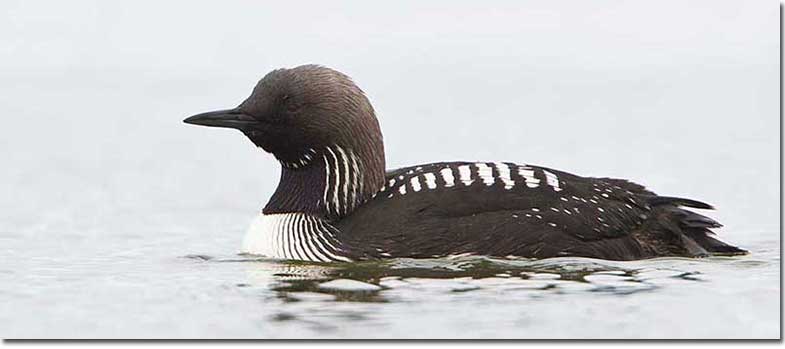
The typical look of a dark throat. Photograph © Glenn Bartley.
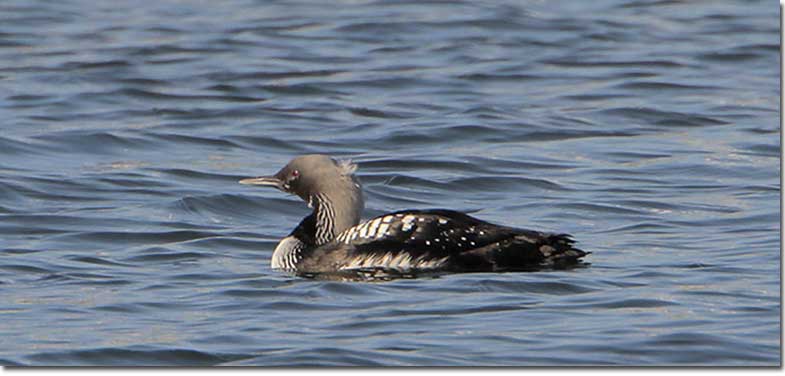
Molting Pacific Loon. Photograph © Greg Lavaty.
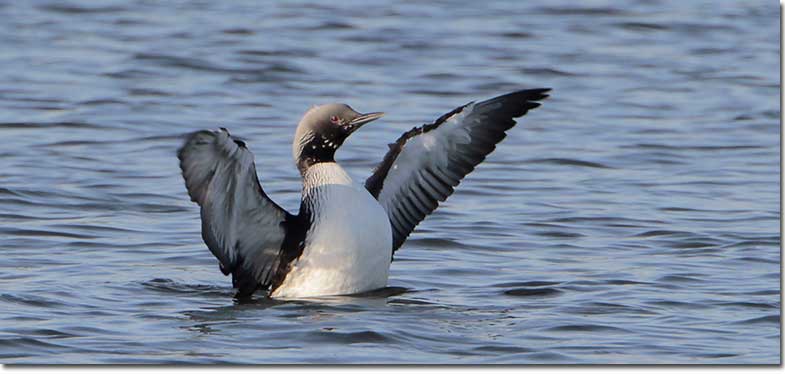
Note the pale under wing linings. Photograph © Greg Lavaty.
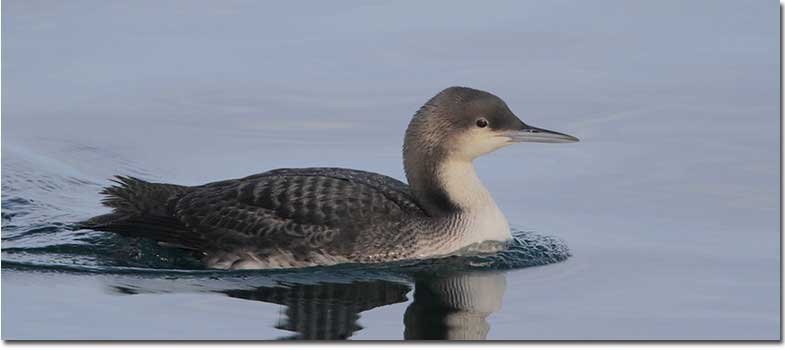
Winter birds are grayish-brown above with whitish underparts. Back is generally darker than other loons in winter plumage. Juveniles very similar. Photograph © Greg Lavaty.
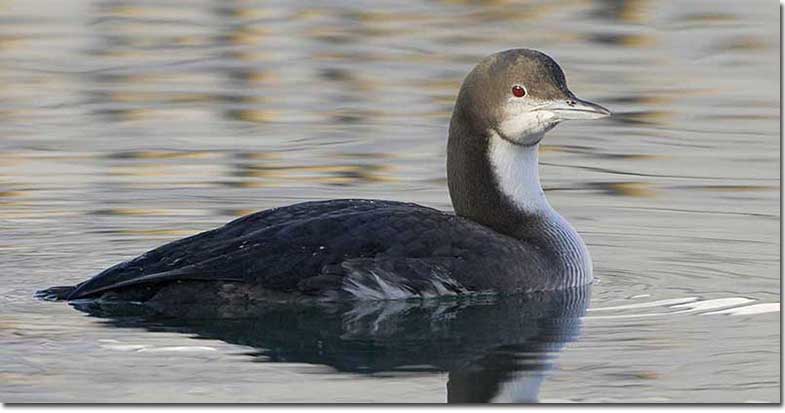
Most adults in winter plumage will show a narrow dark ring across the throat. Photograph © Glenn Bartley.
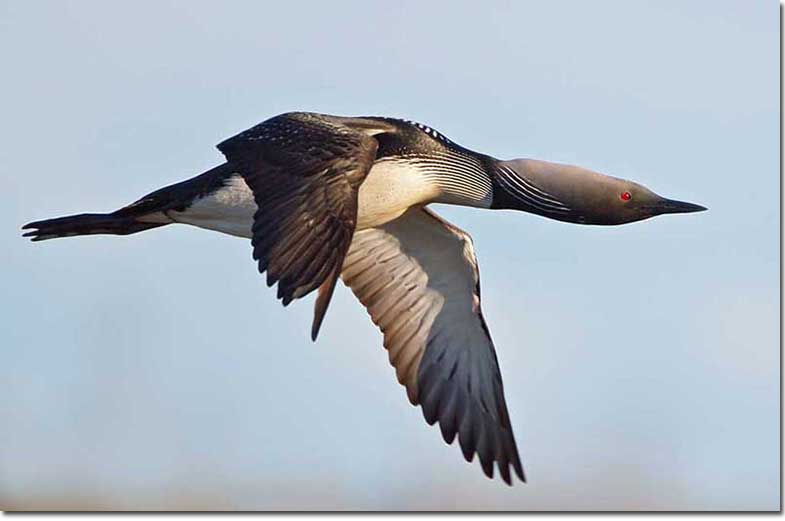
Can show a hump-backed appearance in flight. Photograph © Glenn Bartley.
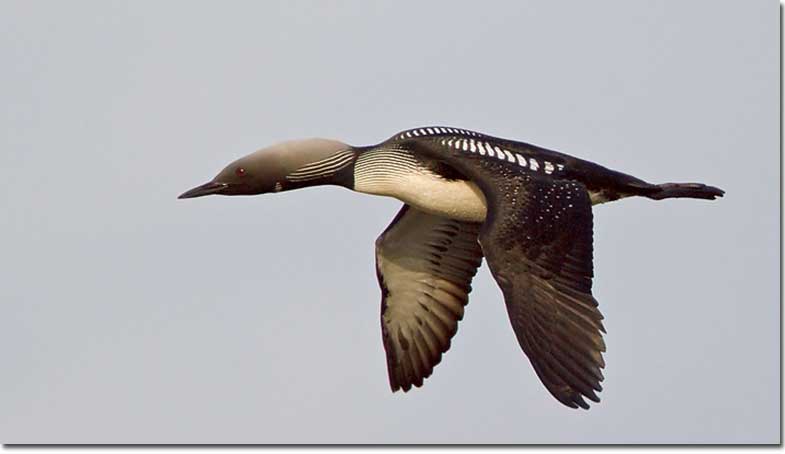
Wings mostly a uniform black. Note the white markings on the back. Photograph © Glenn Bartley.
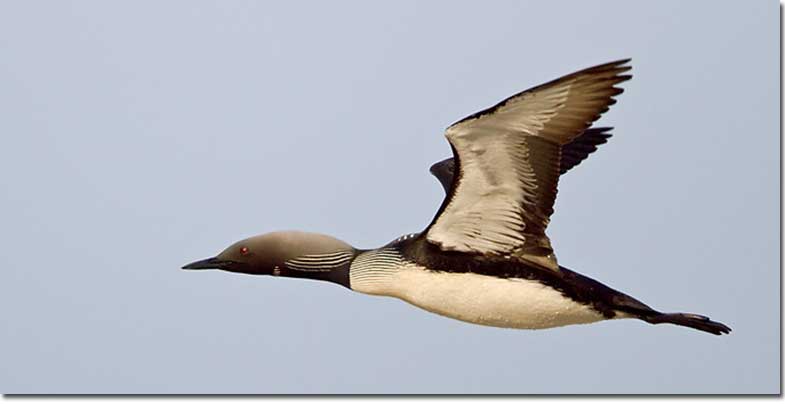
Note the dark trailing edge to the wings. Photograph © Glenn Bartley.
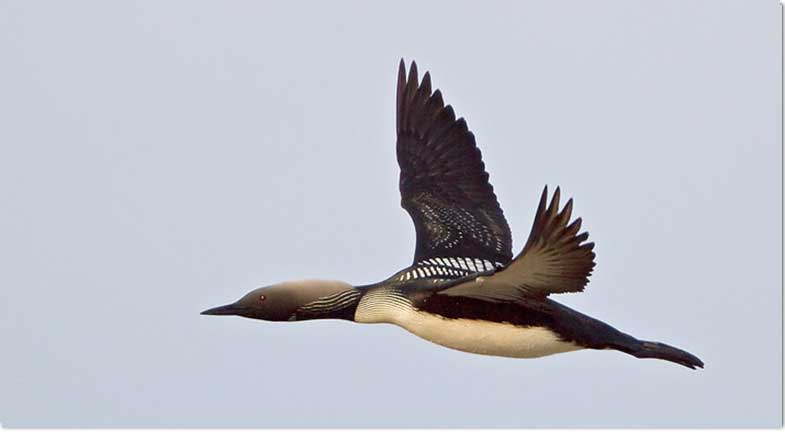
Photograph © Glenn Bartley.
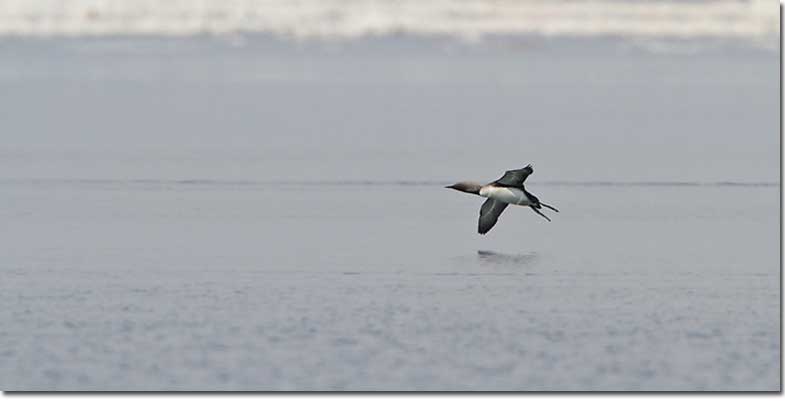
Photograph © Glenn Bartley.
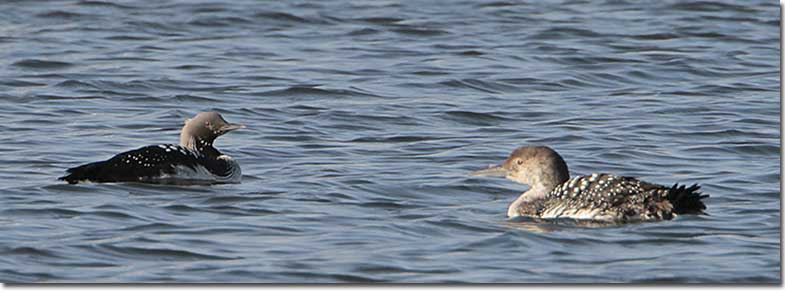
The Pacific Loon (left) in this photograph is in near, full breeding plumage. It is smaller and has a smaller bill than the Common Loon on the right. Photograph © Greg Lavaty.
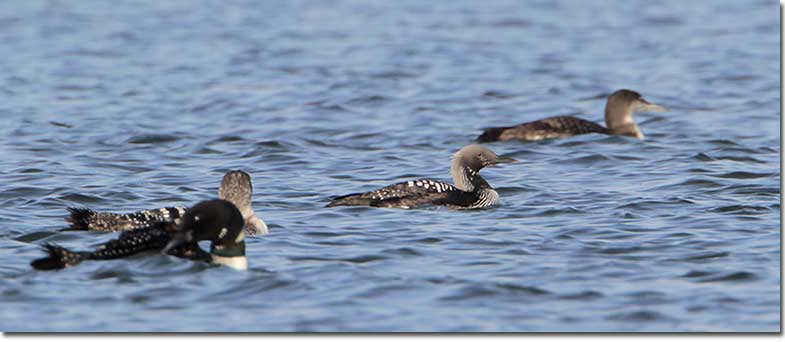
Pacifc Loon with Common Loons. The Common Loon on the front left is in breeding plumage. Photograph © Greg Lavaty.

